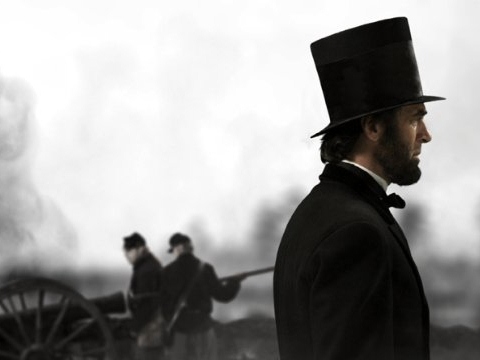
Director Salvador Litvak was all set to approach studios about his script for a new film on Abraham Lincoln the weekend Steven Spielberg optioned historian Doris Kearns Goodwin’s book on the 16th president.
What seemed like a cruel stroke of fate ended up being a blessing, Litvak tells Big Hollywood.
After all, we haven’t seen a film about Lincoln in years – setting aside this summer’s historical mashup casting the president as a vampire slayer. A larger than life figure like Lincoln offers storytellers any number of angles from which to tell his tale.
Plus, the fresh attention to Spielberg’s Lincoln,” which hits theaters Nov. 9, can’t help but spill over to Litvak’s “Savng Lincoln,” also debuting this fall.
“In the end, things worked out the way they should,” Litvak says.
“Saving Lincoln” focuses on both the president (Tom Amandes) as well as his longtime confidant, U.S. Marshal Ward Hill Lamon (Lea Coco).
“He was the guy Lincoln could unwind with,” the director says. Lamon’s importance to Lincoln wasn’t restricted to male bonding. Lamon repeatedly prevented the president’s enemies from taking him out.
“They didn’t just try to kill [Lincoln] in 1865. Death threats poured in the moment he was elected,” Litvak says. “He naturally stepped into the role of bodyguard. There was no secret service [at the time]. For the next four years [Lamon] served very admirably as Lincoln’s head of security.”
“Saving Lincoln” promises to show that friendship in a way not seen before, he says. The film will also celebrate Lincoln’s less stoic side.
“He didn’t go five minutes without telling a joke, to illustrate a point, to make a complex political or spiritual idea understandable,” he says.
The film will offer a unique visual presentation of Lincoln’s time period by fusing new technology with very old photographs.
Inspired by projects like “300” and “Sky Captain and the World of Tomorrow” which used extensive green screen backgrounds and added visuals in later, Litvak recreated Lincoln’s America in a whole new way. Litvak and his crew used photos digitized by the Library of Congress taken during the Civil War era and used them as the backdrop for his actors.
The technique, dubbed CineCollage, involves large negatives sliced in layers to create a three-dimensional backdrop.
“We were never trying to fool the audience into thinking it’s real … it’s a style,” he says. “When you’re not going for real … the brain naturally wants it to be real, so the audience is engaged and they close the loop.”
Spielberg himself has said Lincoln as a subject is inexhaustible, Litvak recalls. And he couldn’t agree any more.
“If you care about Lincoln and America, you need to see Spielberg’s movie and our movie,” he says. “To get what Lincoln is all about you need to see both movies. They’re great companion pieces.”
Follow Christian Toto on Twitter @TotoMovies

COMMENTS
Please let us know if you're having issues with commenting.